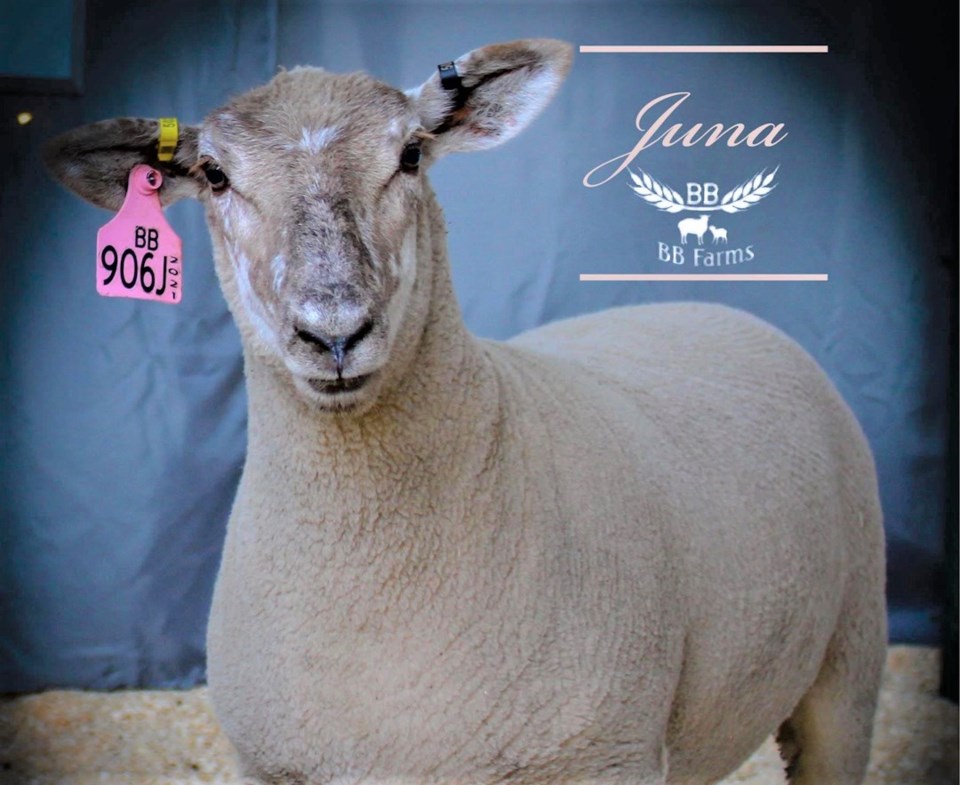GLEN EWEN - Pamela Bartlett grew up on a mixed farm, which included purebred Charolais cattle and grain.
Bartlett joined the local 4-H club at the age of six and remained a member until she was 18 years old and will receive her 20-year leader pin in 2023. The 4-H movement has always been a passion for her family.
For a few years, while being a 4-H member, Bartlett took a sheep project, not realizing how much this would impact her adult life.
Bartlett is the treasurer for the Saskatchewan Sheep Breeders Association and the sheep leader of her club. She works full-time as the chief administrative officer for the RM of Enniskillen, while her husband Daniel works for Centurion Canada Infrastructure and is a firefighter for Carnduff’s fire department.
They moved to their family farm in 2011 with their son Eli. In 2013, they had their daughter Abigail.
Initially, the young farm family bought a small herd of black angus cows. This proved not to be for them due to some medical issues, so the search began for something manageable for their family, and it was decided to be sheep.
Five years ago, they began a commercial flock of 30 sheep. After two years, they purchased a small flock of purebred Canadian Arcott sheep. They now have a large flock of 120 ewes, rams and lambs, with most of them being purebred.
Bartlett is very enthusiastic about her breeding program and is proud to say that almost every one of her sheep have the late Colleen Sawyer genetics.
Sawyer was elected to the Agricultural Hall of Fame and played a key role in the sheep industry and the Canadian Arcott breed.
The Canadian Arcott breed was one of three breeds developed at the Agriculture Canada research station in Ottawa from 1970-1985. It was released to Canadian farmers in the late 1980s.
They once again wanted to expand their herd when Daniel saw the Charolais sheep at Agribition. This breed comes from the same region in France as the Charolais cattle.
Bartlett is enthusiastic about the purebred industry and will research for hours on genetics and how to set up her future breeding pens.
Lambing time is also stressful, so Bartlett would take one week of her vacation and Daniel would take the following week to ensure someone was on hand during difficult birthing issues. Only a few lambs were born at that time, and when they returned to work, the ewes decided it was time to give birth, leaving both of the farmers exhausted.
After speaking with a couple in Ontario, it was decided that synchronizing and inducing the ewes would be beneficial.
A CIDR is placed in the ewe and removed after 12 days. At this time, they are given an injection of gonadotrophins. The ram is introduced for three days at this time. Ultrasounds are done at 50-70 days. If pregnant at 143 days they are injected to induce labour. This injection only works if the ewe is in pre-stage labour. Lambing usually begins on day 145.
With this system they have less loss and healthier lambs. Birthing can be watched closer and extra care is needed when two or more lambs are born to one ewe. Only two lambs are left on a ewe for the best results; the third lamb would be fostered to another ewe. It also gives better birthing dates that are closer together.
Before the sale of rams, they are completely vet checked and ensured they are of breeding stock quality. On occasion one may not be, but this is rare with sheep.
Bartlett also began to draw blood from her flock and purchased a centrifuge to spin blood down. The serum is sent to Prairie Diagnostic Services in Saskatoon to have the serum pregnancy evaluated.
In August, Bartlett went to Ontario to take an advanced course for ultrasound in sheep. An ultrasound can show lamb size, infection in the uterus and due dates, or if the ewe is pregnant.
Artificial insemination is another practice they would like to begin next year, but this can only be done laparoscopically and few veterinarians in Canada provide this service, so it must be carefully planned.
Her sheep are sheared twice a year, due to lambing several times a year.
Bartlett loves to help other breeders and to show them that one can work full time off the farm with success.
Bartlett said, “Let your sheep work for you, not that you work for your sheep.”




